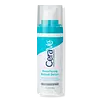What's inside
What's inside
 Key Ingredients
Key Ingredients

 Benefits
Benefits

 Concerns
Concerns

 Ingredients Side-by-side
Ingredients Side-by-side

Water
Skin ConditioningAlcohol Denat.
AntimicrobialMethylpropanediol
Solvent1,2-Hexanediol
Skin ConditioningBetaine
HumectantDipropylene Glycol
HumectantGardenia Taitensis Callus Extract
AntioxidantOak Root Extract
Skin ConditioningTremella Fuciformis Extract
HumectantCentella Asiatica Extract
CleansingFicus Carica Fruit Extract
HumectantOrchid Leaf/Root/Stem Extract
Skin ConditioningChamomilla Recutita Extract
Skin ConditioningChrysanthemum Parthenium Extract
Skin ConditioningHydrogenated Lecithin
EmulsifyingSodium Hyaluronate
HumectantPanthenol
Skin ConditioningAcrylates/C10-30 Alkyl Acrylate Crosspolymer
Emulsion StabilisingGlycerin
HumectantTromethamine
BufferingButylene Glycol
HumectantPolyglyceryl-10 Laurate
Skin ConditioningDextrin
AbsorbentSodium Phytate
Ceramide NP
Skin ConditioningTocopherol
AntioxidantAcetyl Hexapeptide-8
HumectantAcetyl Octapeptide-3
HumectantAcetyl Tetrapeptide-2
Skin ConditioningOligopeptide-6
Skin ConditioningTripeptide-1
Skin ConditioningCopper Tripeptide-1
Skin ConditioningHexapeptide-2
BleachingDipeptide-2
Skin ConditioningAcetyl Tetrapeptide-3
Skin ProtectingAcetyl Tripeptide-1
Skin ConditioningHexapeptide-9
Skin ConditioningTripeptide-2
Skin ConditioningNonapeptide-1
Skin ConditioningPentapeptide-3
Skin ConditioningTripeptide-3
Skin ConditioningAlanine/Histidine/Lysine Polypeptide Copper Hcl
Skin ConditioningDipeptide-4
Skin ConditioningAcetyl Tetrapeptide-5
HumectantPalmitoyl Dipeptide-7
Skin ConditioningPalmitoyl Hexapeptide-12
Skin ConditioningPalmitoyl Tripeptide-1
Skin ConditioningPalmitoyl Tripeptide-5
Skin ConditioningPalmitoyl Pentapeptide-4
Skin ConditioningDipeptide Diaminobutyroyl Benzylamide Diacetate
Skin ConditioningPalmitoyl Tetrapeptide-7
Skin ConditioningGuaiazulene
AntimicrobialParfum
MaskingEthylhexylglycerin
Skin ConditioningWater, Alcohol Denat., Methylpropanediol, 1,2-Hexanediol, Betaine, Dipropylene Glycol, Gardenia Taitensis Callus Extract, Oak Root Extract, Tremella Fuciformis Extract, Centella Asiatica Extract, Ficus Carica Fruit Extract, Orchid Leaf/Root/Stem Extract, Chamomilla Recutita Extract, Chrysanthemum Parthenium Extract, Hydrogenated Lecithin, Sodium Hyaluronate, Panthenol, Acrylates/C10-30 Alkyl Acrylate Crosspolymer, Glycerin, Tromethamine, Butylene Glycol, Polyglyceryl-10 Laurate, Dextrin, Sodium Phytate, Ceramide NP, Tocopherol, Acetyl Hexapeptide-8, Acetyl Octapeptide-3, Acetyl Tetrapeptide-2, Oligopeptide-6, Tripeptide-1, Copper Tripeptide-1, Hexapeptide-2, Dipeptide-2, Acetyl Tetrapeptide-3, Acetyl Tripeptide-1, Hexapeptide-9, Tripeptide-2, Nonapeptide-1, Pentapeptide-3, Tripeptide-3, Alanine/Histidine/Lysine Polypeptide Copper Hcl, Dipeptide-4, Acetyl Tetrapeptide-5, Palmitoyl Dipeptide-7, Palmitoyl Hexapeptide-12, Palmitoyl Tripeptide-1, Palmitoyl Tripeptide-5, Palmitoyl Pentapeptide-4, Dipeptide Diaminobutyroyl Benzylamide Diacetate, Palmitoyl Tetrapeptide-7, Guaiazulene, Parfum, Ethylhexylglycerin
Water
Skin ConditioningPropanediol
SolventDimethicone
EmollientCetearyl Ethylhexanoate
EmollientNiacinamide
SmoothingAmmonium Polyacryloyldimethyl Taurate
Emulsion StabilisingDipotassium Glycyrrhizate
HumectantHydrogenated Lecithin
EmulsifyingPotassium Phosphate
BufferingCeramide NP
Skin ConditioningCeramide AP
Skin ConditioningCeramide EOP
Skin ConditioningCarbomer
Emulsion StabilisingCetearyl Alcohol
EmollientBehentrimonium Methosulfate
Dimethiconol
EmollientLecithin
EmollientSodium Citrate
BufferingRetinol
Skin ConditioningSodium Hyaluronate
HumectantSodium Lauroyl Lactylate
EmulsifyingCholesterol
EmollientPhenoxyethanol
PreservativeAlcohol
AntimicrobialIsopropyl Myristate
EmollientCaprylyl Glycol
EmollientCitric Acid
BufferingTrisodium Ethylenediamine Disuccinate
Pentylene Glycol
Skin ConditioningPhytosphingosine
Skin ConditioningXanthan Gum
EmulsifyingPolysorbate 20
EmulsifyingEthylhexylglycerin
Skin ConditioningWater, Propanediol, Dimethicone, Cetearyl Ethylhexanoate, Niacinamide, Ammonium Polyacryloyldimethyl Taurate, Dipotassium Glycyrrhizate, Hydrogenated Lecithin, Potassium Phosphate, Ceramide NP, Ceramide AP, Ceramide EOP, Carbomer, Cetearyl Alcohol, Behentrimonium Methosulfate, Dimethiconol, Lecithin, Sodium Citrate, Retinol, Sodium Hyaluronate, Sodium Lauroyl Lactylate, Cholesterol, Phenoxyethanol, Alcohol, Isopropyl Myristate, Caprylyl Glycol, Citric Acid, Trisodium Ethylenediamine Disuccinate, Pentylene Glycol, Phytosphingosine, Xanthan Gum, Polysorbate 20, Ethylhexylglycerin
 Reviews
Reviews

Ingredients Explained
These ingredients are found in both products.
Ingredients higher up in an ingredient list are typically present in a larger amount.
Ceramide NP is a type of ceramide.
Ceramides are intercellular lipids naturally found in our skin that bonds dead skin cells together to create a barrier. They are known for their ability to hold water and thus are a great ingredient for dry skin.
Ceramides are an important building block for our skin barrier. A stronger barrier helps the skin look more firm and hydrated. By bolstering the skin ceramides act as a barrier against irritating ingredients. This can help with inflammation as well.
If you would like to eat ceramides, sweet potatoes contain a small amount.
Read more about other common types of ceramides here:
Ceramide AP
Ceramide EOP
Ethylhexylglycerin (we can't pronounce this either) is commonly used as a preservative and skin softener. It is derived from glyceryl.
You might see Ethylhexylglycerin often paired with other preservatives such as phenoxyethanol. Ethylhexylglycerin has been found to increase the effectiveness of these other preservatives.
Hydrogenated Lecithin is created from the hydrogenation of lecithin (a group of phospholipids). Hydrogenation is a chemical reaction between hydrogen and another element.
This ingredient is an emollient and emulsifier. As an emollient, it helps soften skin by trapping moisture within. As an emulsifier, it prevents oil and water ingredients from separating.
Sodium Hyaluronate is hyaluronic acid's salt form. It is commonly derived from the sodium salt of hyaluronic acid.
Like hyaluronic acid, it is great at holding water and acts as a humectant. This makes it a great skin hydrating ingredient.
Sodium Hyaluronate is naturally occurring in our bodies and is mostly found in eye fluid and joints.
These are some other common types of Hyaluronic Acid:
Learn more about Sodium HyaluronateWater. It's the most common cosmetic ingredient of all. You'll usually see it at the top of ingredient lists, meaning that it makes up the largest part of the product.
So why is it so popular? Water most often acts as a solvent - this means that it helps dissolve other ingredients into the formulation.
You'll also recognize water as that liquid we all need to stay alive. If you see this, drink a glass of water. Stay hydrated!
Learn more about Water